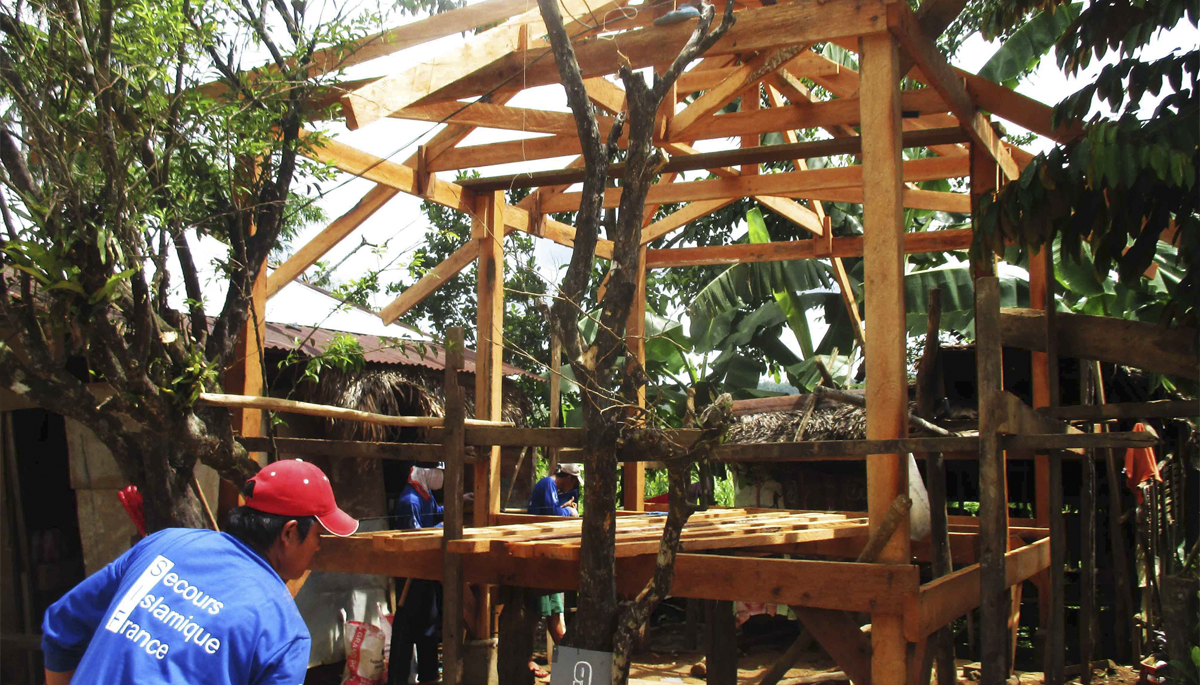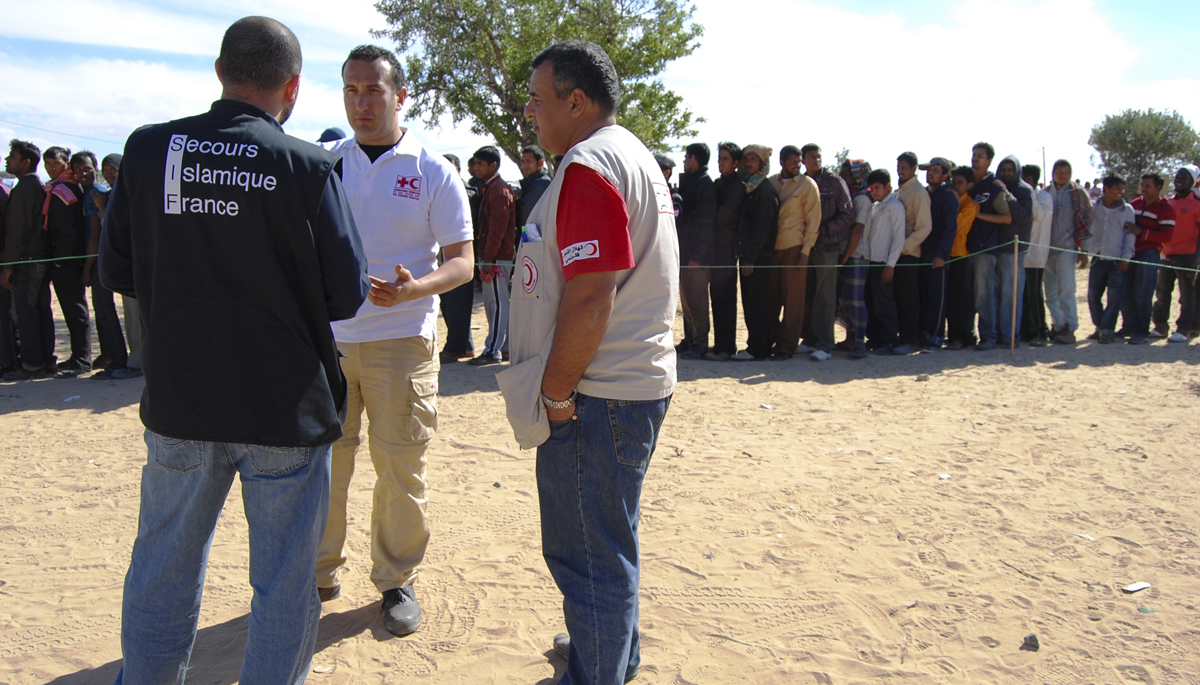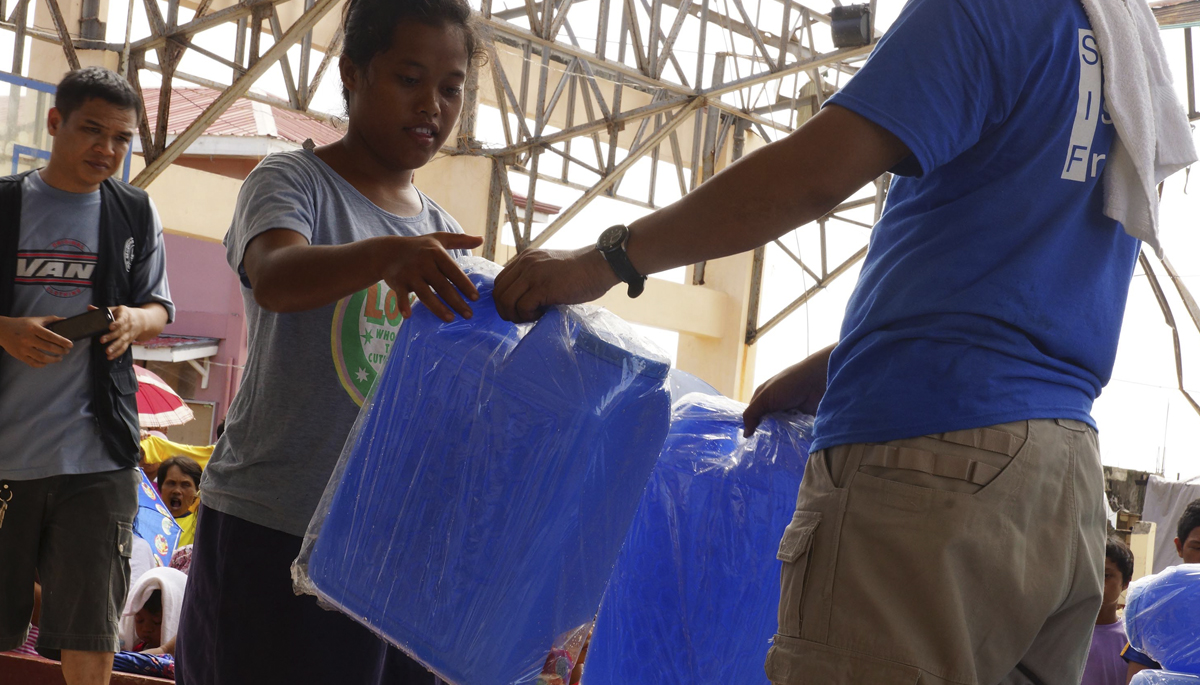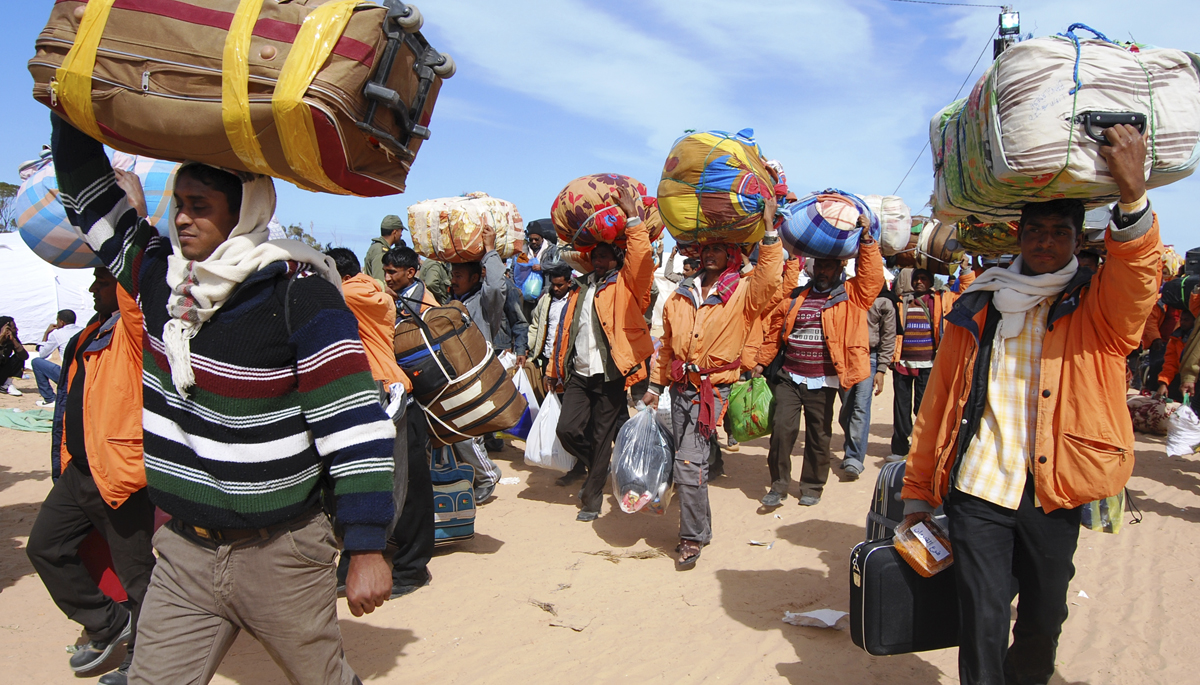Humanitarian assistance to the most vulnerable populations
Humanitarian relief is intended for people who are
affected by conflicts (wars or confrontations that
follow political, religious or other tensions) or natural
disasters (earthquakes, tsunami, floods, droughts, etc.).
In both cases, it is necessary to provide people with
immediate assistance as the damage, either material
or human, can be significant, and therefore on-ground
presence is essential in the days following the disaster.
The objective is to quickly analyze people’s needs and
develop a strong logistics strategy in order to distribute food
aid, drinking water, and shelter while awaiting rehabilitation.
At present, over 50 million1
people are displaced worldwide
due to either a natural disaster or a conflict.
The majority of these individuals are internally displaced
persons (IDPs) or refugees forced to flee their homes and
sometimes even their own country. The problems of lack
of security and the difficulties in attaining a refugee status
come together with the lack of water, food, clothing, and
shelter.
Secours Islamique France coordinates its actions with
other humanitarian actors within the framework of coordination
established by the United Nations through its OCHA2
office. This coordination provides an appropriate response
to essential needs of affected populations: Water and
Sanitation, Food Security, Health, Shelter. Rehabilitation
aid then takes over this immediate assistance.
Improve the day to day lives of IDPs and refugees
For instance, in Syria, Secours Islamique France has strived to improve the living conditions of IDPs and refugees since the beginning of the conflict in March 2011. The destruction of homes, schools, hospitals and health centres has led to the departure of more than 11 million people3 . To help these people, Secours islamique France has set up projects for food and non-food and hygiene kits distribution. An emergency response is also organized at the beginning of winter and involves, for instance, giving people access to the essential means of heating such as fuel, blankets, and carpets. Secours Islamique France also rehabilitates buildings and water system installations.
Over 80,000
people have directly benefited from these projects in 2013,
carried out in partnership with UNHCR and Unicef4
.
In 2015, the SIF sent a mission to the Balkans in order
to provide humanitarian aid to the populations who had
left Iraq, Syria, Afghanistan, Pakistan, etc. in search of a
dignified and secure life. Warm clothes and shoes were
provided to them so that they can cope with the low
temperatures.

Mitigate the impact of the crisis and the vulnerability of populations
The region of the Horn of Africa in 2011 suffered from the worst food crisis it had ever seen for decades. 9.8 million5 Kenyans are food insecure and unable to feed themselves. Secours Islamique France has implemented capacity building projects for beneficiaries in order to improve their own livelihoods such as: livestock vaccination, training in farming practices, training in poultry farming and beekeeping. The same problem arose in Somalia which is affected by civil war and widespread insecurity. Secours Islamique France assists displaced and host populations in the manufacturing of fishing boats in fiberglass.

Access to drinking water, one of the top priorities
Following the devastation caused by Typhoon Haiyan in the Philippines in 2013, people were left on their own. The disaster affected 14 million people, including 4 million who were internally displaced. More than one million homes were damaged or completely destroyed. Secours Islamique France, distributed jerrycans and water purifying tablets to people in need to enable them to access drinking water in the Southeast region which was identified as one of the most affected regions. The SIF also built more than 100 semi-permanent shelters to relocate families.

[1] Source: UNHCR - United Nations High Commissioner for refugees
[2] Source: OCHA - Office for the Coordination of Humanitarian Affairs
[3] Source: UNHCR
[4] Unicef: The United Nations Children’s Fund
[5] Source: European Community, Food crisis in Kenya

